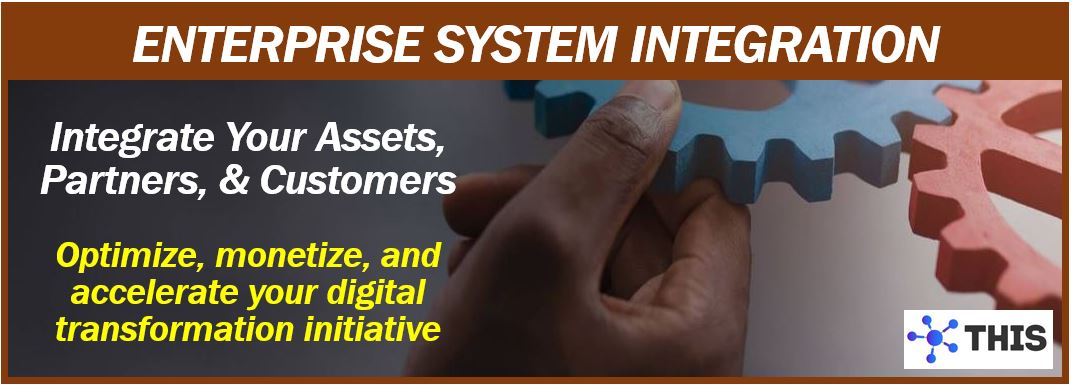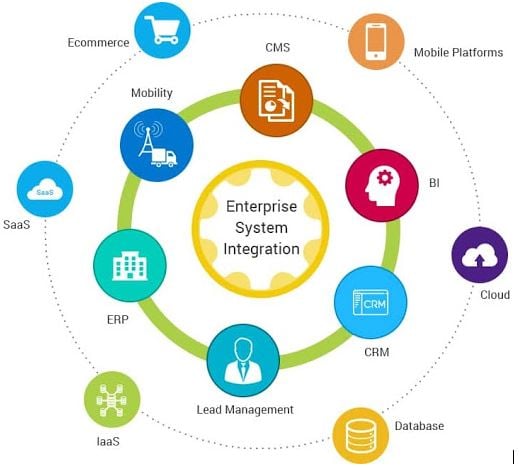In today’s world, we hardly see any organization or company which has an independent department that does not share information. Organizations in today’s market cannot work efficiently, unless all the individual departments are connected to share information. Enterprise System Integration is a process where all the existing systems in an enterprise or organization are connected to share and communicate information with each other. The process helps to increase the data flow and integrate multiple applications to simplify the business.

For example, a planning team in an organization cannot predict future demands and current trends affecting the customer without any information from the supply division, which shows the current requirement from the customer.
The planning team would also require customer feedback and data from the customer experience team to understand what will appeal to the customer. Similarly, in the modern world enterprise, all the systems in an organization are connected to provide and share information collectively, which can make the business more efficient.
The use of Voice assistants like Alexa and Google, which stay connected to a user real-time regardless of several devices and locations, is an excellent example of Enterprise System Integration.
So, what is system integration? Enterprise system integration mainly uses software and secure servers to ensure constant connectivity between the systems.
Enterprise system integration mainly uses software and secure servers to ensure constant connectivity between the systems. By connecting multiple systems in an organization, new functionalities and processes are born. Since system integration involves different types of systems, it takes a lot of time to make one system adapt to others and create new API calls, new databases, files, and solutions. There are basically two types of integration solutions: Tightly Coupled and Service-Oriented.
Tightly Coupled System Integration
A tightly coupled system integration is where one system requests for information while others provide the information. In this kind of system integration, the application on one system makes a data request to another system. The request is moved and converted to a form that is accepted by the system from which the data is requested.
Once the data request is translated and received, the data is transferred to the system that requested it. It is one of the common and basic types of system integration in an organization. It is used mostly by new organizations as it is direct, less complex, and less expensive. The only downfall of this approach is the cost one has to spend on its upgradation, as each core has to be replaced with a new one.
 Service-Oriented System Integration
Service-Oriented System Integration
Service-oriented system integration is what is used by more prominent organizations and is much easier to upgrade as one does not need to discard all previous API integrations and only needs to create new cores where needed. This system integration architecture is better and promotes flexibility and reusability. Under this, change in one system will not affect the functioning of others.
Benefits of Enterprise System Integration
Enterprise system integration is one of the most critical components for organizations to excel in the modern-day market. Some of its benefits to the organization are:
- The main advantage of system integration is data mobility. With system integration comes the availability of all data and access to it on the move. It can easily be done when system integration is done with Cloud computing, making the data accessible anywhere in the world.
- Customer relations is one of the most positively affected systems in an organization. It not only helps to resolve customers’ queries efficiently but also helps to understand their requirements and amend the products and services accordingly.
- System integration promotes the sharing of data, giving full access to real-time data from multiple systems. It helps to understand the requirement of all systems in an organization and modifies the system based on it.
- It also helps in managing the data of employees across various locations where you can get the data of an employee from any site in real-time.
- It creates automation of the system and improves the efficiency of all departments and their interoperability.
- System integration helps to reduce the redundancy in the process and makes it more precise and less time-consuming.
_________________________________________________________________
Interesting related article: “What is Organizational Structure?“

